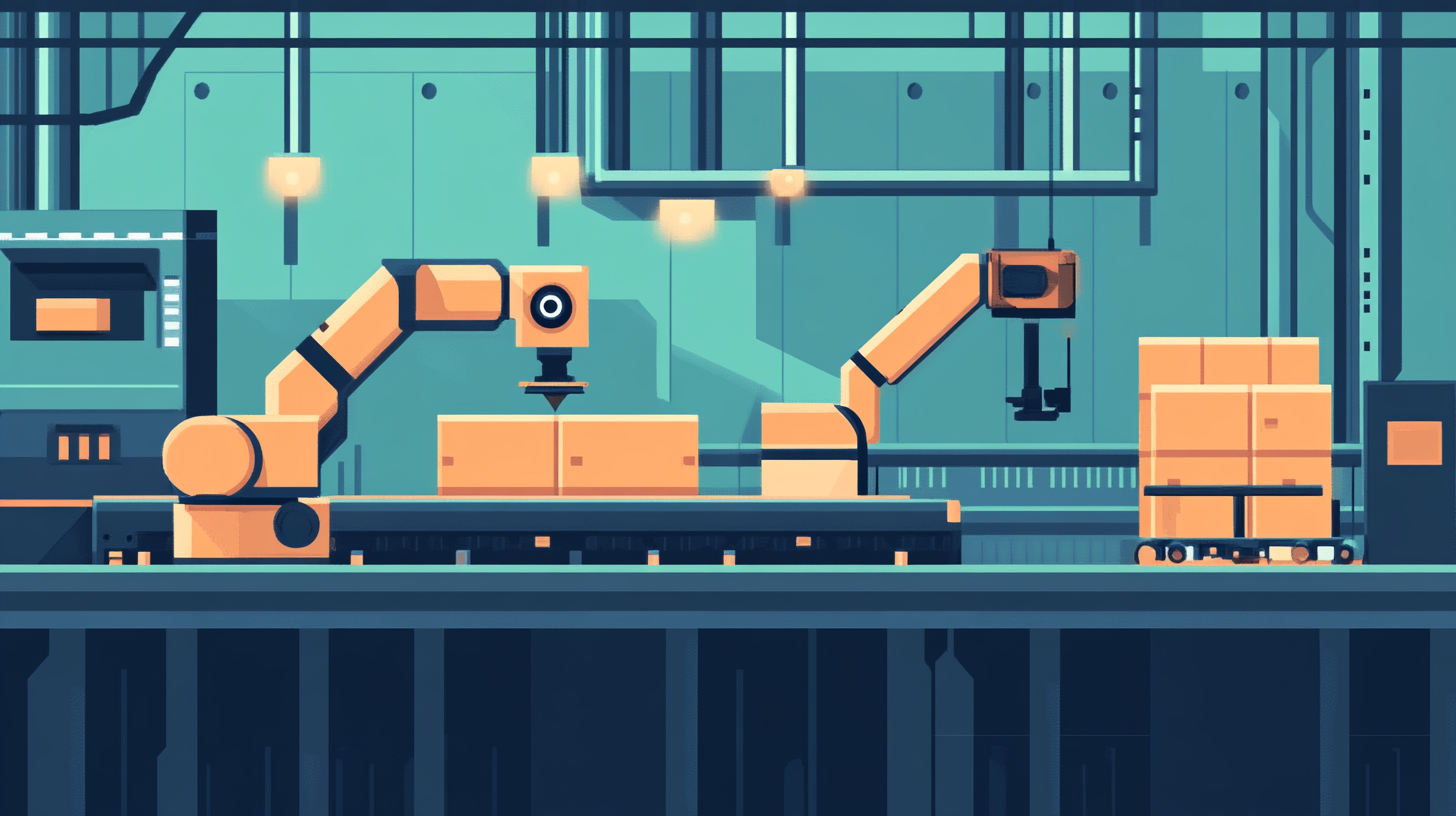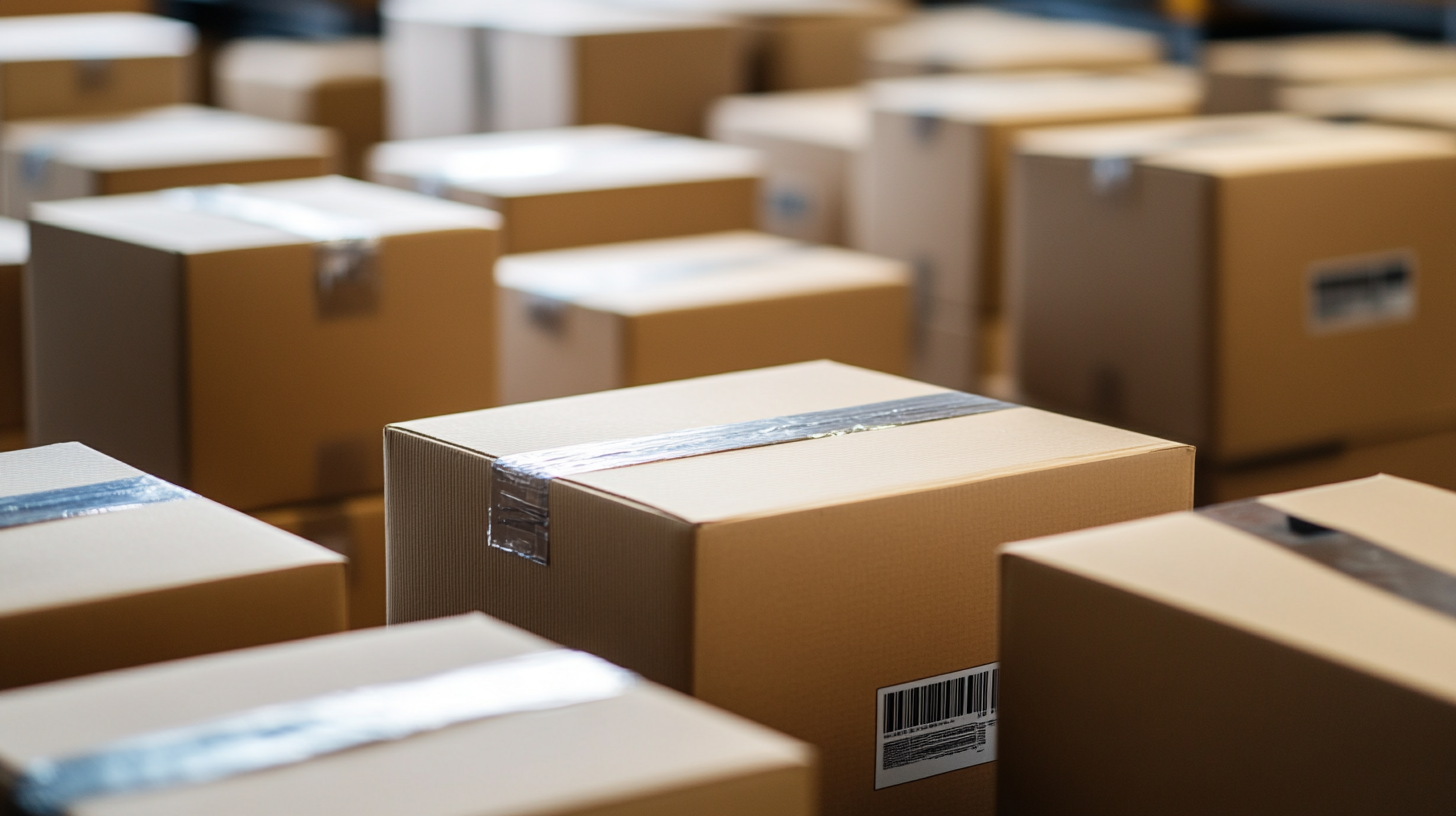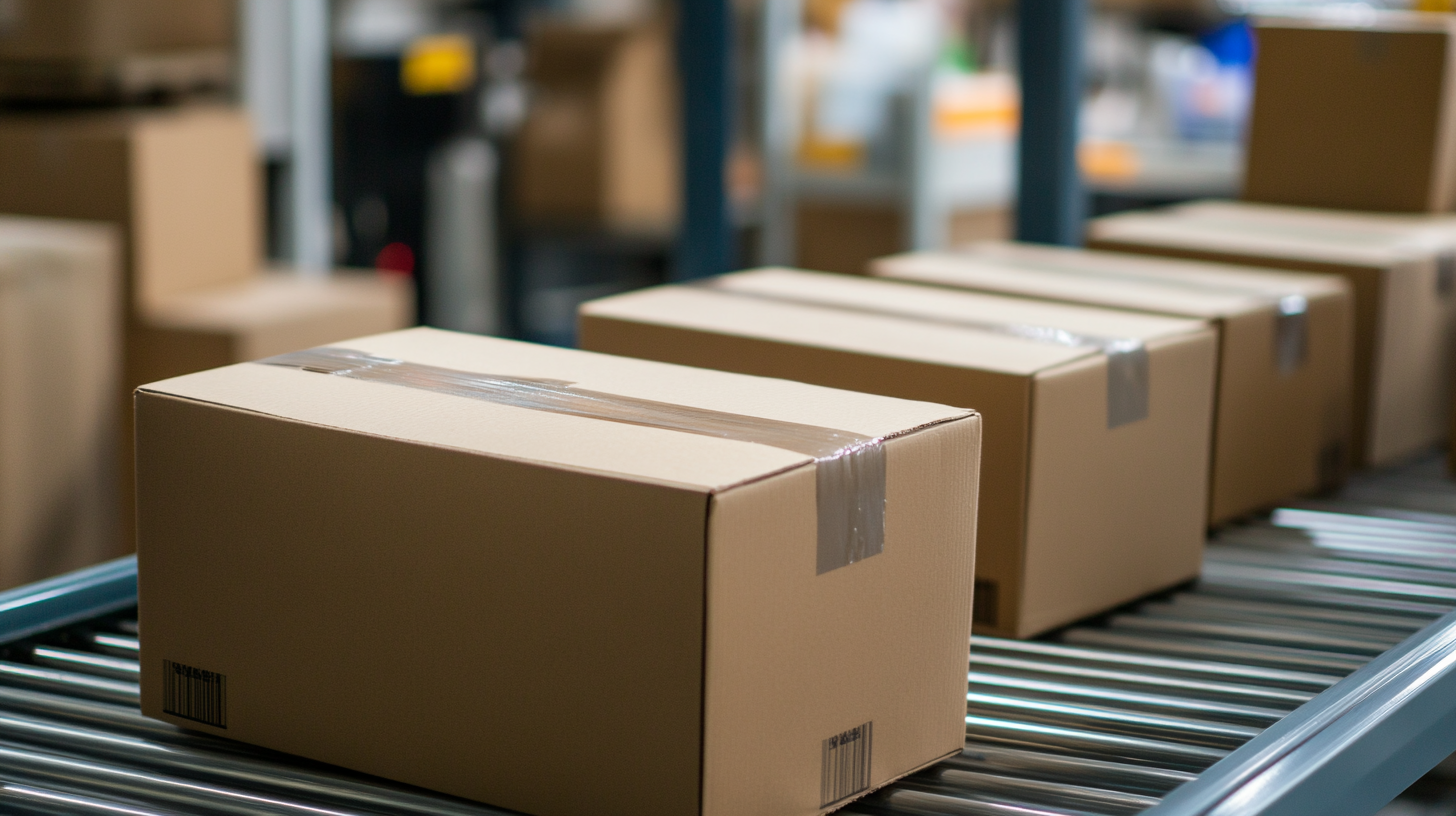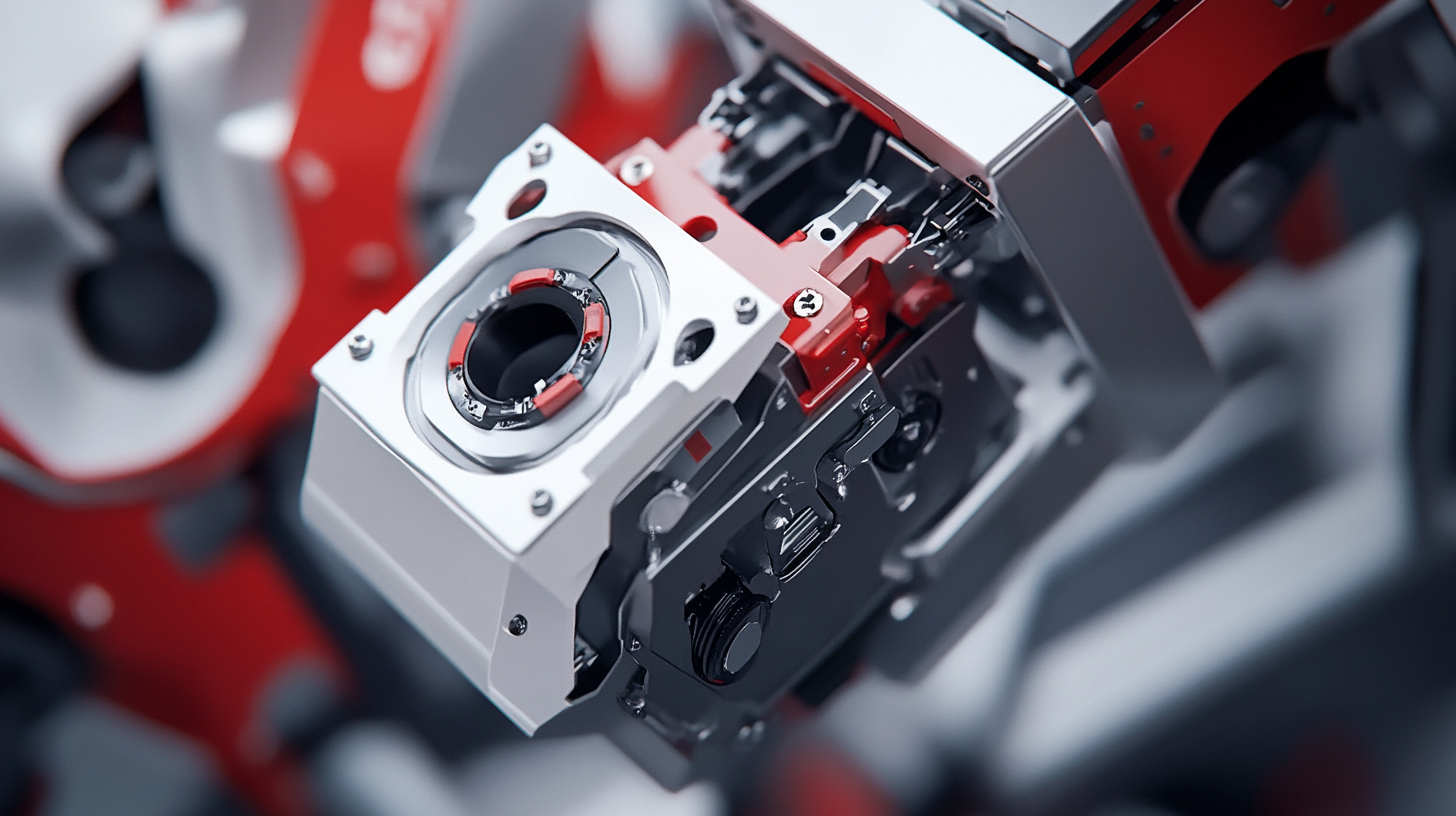7 Benefits of Choosing Packaging Robots for Your Business Efficiency
In an era where operational efficiency and cost-effectiveness dictate the success of businesses, the adoption of Packaging Robots has become increasingly vital. According to a report by the International Federation of Robotics, the demand for automation solutions in packaging is projected to grow at an annual rate of over 10% through 2025. This surge in interest highlights the critical role that Packaging Robots play in streamlining processes, reducing labor costs, and enhancing productivity. By minimizing human error and accelerating the speed of packaging operations, these advanced technological solutions empower companies to meet the rising demands of modern consumers.
Moreover, a study published by the Packaging Machinery Manufacturers Institute (PMMI) reveals that over 60% of companies implementing packaging automation report significant improvements in their operational efficiency. As businesses navigate the complexities of supply chain management and customer expectations, investing in Packaging Robots not only optimizes packaging workflows but also positions companies for sustained growth in a competitive landscape. This blog will explore seven key benefits of integrating Packaging Robots into your business strategy, demonstrating how they can revolutionize your operations and drive long-term success.

Benefits of Automation: How Packaging Robots Enhance Operational Efficiency
In today's fast-paced industrial landscape, automation has become a cornerstone of operational efficiency, particularly in packaging processes. The rise of packaging robots exemplifies this trend, offering significant benefits that can enhance overall productivity. As companies increasingly seek to streamline their operations, the packaging automation market is projected to reach a staggering USD 136.47 billion by 2032, up from USD 64.70 billion in 2022. This remarkable growth underscores the critical role that automated solutions play in modern business strategies. The integration of robotics into packaging not only improves speed and accuracy but also minimizes human error, which can be costly in high-volume production environments. Leveraging advanced AI technologies, companies can optimize their warehouse management systems, enhancing both efficiency and productivity across the supply chain. For instance, data indicates that organizations using robotics in manufacturing have experienced improved precision and the ability to maintain a competitive edge, crucial in today’s global market. Furthermore, major players like Amazon are leading the charge in revolutionizing fulfillment centers through robotics. Their innovative approach focuses on leveraging robotics to streamline operations and enhance efficiency, enabling them to meet increasing consumer demands effectively. In sectors like food processing, the potential for advancements through food robotics highlights the need for businesses to adapt to new technologies that can transform their operational capabilities and future prospects.

Cost Savings: Reducing Labor and Material Waste with Robotic Packaging
The advent of packaging robots marks a transformative era in the packaging industry, particularly as businesses seek to streamline operations and enhance sustainability. Foremost among the advantages of robotic packaging is the significant cost savings achieved through reduced labor and material waste. By automating repetitive tasks, companies can lower their dependency on manual labor, which not only cuts down costs but also minimizes the risk of human error. This efficiency is vital as sectors like manufacturing and food production grapple with ever-increasing demands for speed and accuracy.
Moreover, incorporating AI-powered robotics into the packaging workflow facilitates smarter decision-making and adaptability. These advanced systems can monitor operations in real-time, adjusting processes to optimize performance and conserve resources. As robots take on tasks that were traditionally manual, companies can redirect their workforce towards more complex, value-added activities. This strategic reallocation not only maximizes productivity but also fosters an environment conducive to innovation.
As the packaging automation market continues to grow, projected to reach substantial figures in the coming years, technologies such as AI, IoT, and blockchain will play pivotal roles in driving efficiency. The integration of these smart technologies not only enhances operational capabilities but also contributes positively to sustainability goals. By minimizing energy consumption and waste, robotic packaging solutions will help businesses not only improve their bottom line but also position themselves as leaders in the sustainable packaging movement.

Increased Speed: Enhancing Production Rates with Automated Packaging Solutions
In today's fast-paced manufacturing environment, the quest for efficiency often leads businesses to explore innovative solutions. One of the most transformative changes companies can implement is the introduction of packaging robots. These automated systems are designed to streamline the packaging process, significantly increasing production rates. By minimizing the reliance on manual labor, businesses can not only accelerate their operations but also maintain consistent quality in their packaging efforts.
Automated packaging solutions enhance production by incorporating advanced technologies such as AI and machine learning. These systems can quickly adapt to different packaging requirements, eliminating the downtime associated with manual adjustments. Furthermore, they operate continuously without fatigue, ensuring that production lines remain active for longer periods. This capability allows companies to meet high demand peaks without compromising on efficiency or speed.
Implementing packaging robots also allows for better allocation of human resources. With less time spent on repetitive packaging tasks, employees can focus on higher-level responsibilities, such as quality control and process optimization. This shift not only boosts morale but also contributes to a more engaged workforce, ultimately driving productivity across the board. In summary, the ability of packaging robots to enhance speed and efficiency is redefining how businesses approach their production strategies, leading to a more streamlined and profitable operation.

Flexible Adaptability: Packaging Robots for Diverse Product Lines and Sizes
In today’s rapidly evolving market, businesses face the challenge of adapting to diverse product lines and sizes with efficiency and precision. This is where packaging robots play a transformative role. With the global packaging automation market poised to reach approximately USD 136.47 billion by 2032, it is evident that companies are increasingly relying on flexible automation solutions. Robotics not only streamline the packaging process but also enhance adaptability, allowing businesses to respond swiftly to varying market demands and product specifications.
Industry leaders emphasize that the integration of robotics in packaging has revolutionized operations by improving safety and efficiency. Packaging robots can easily switch between different product formats, handling everything from small consumer goods to larger industrial items, which is crucial for businesses looking to diversify their offerings. According to recent reports, the market size for packaging automation alone is set to elevate to around USD 52.2 billion by 2032, fueled by advancements in robotics and artificial intelligence. This growth aligns with a broader industry trend where manufacturers are prioritizing automated solutions to enhance productivity.
Moreover, adopting packaging robots not only fosters efficiency but also mitigates human error, ensuring consistent quality in packaging. As businesses strive to remain competitive in a demanding marketplace, the flexibility offered by robotic systems becomes an invaluable asset. By tailoring packaging operations to fit varied product lines and sizes, companies can optimize their workflow, reduce operational costs, and ultimately improve customer satisfaction.
Improved Consistency: Ensuring Quality and Precision in Packaging Processes
In today's highly competitive market, ensuring consistency in packaging processes is vital for maintaining product quality and customer satisfaction. Improved consistency through the use of packaging robots significantly reduces human error, leading to more precise packaging results. According to a report by the Association for Packaging and Processing Technologies (PMMI), incorporating automation into packaging processes can enhance operational efficiency by up to 30%, allowing businesses to scale while ensuring high quality.
Packaging robots excel in performing repetitive tasks with a level of precision that is difficult to achieve manually. For instance, they can accurately fill, seal, and label products, minimizing discrepancies and ensuring that each package meets predetermined standards. A study by the International Federation of Robotics (IFR) found that robotic packaging solutions can reduce defective products by 60%, thus lowering waste and rework costs. This consistency not only improves the overall quality of the product but also strengthens the brand's reputation in the market.
Furthermore, the implementation of packaging robots allows businesses to adapt to varying product demands without compromising on quality. With robotic systems programmed for versatility, companies can switch between different packaging formats quickly and with minimal downtime. This capability is backed by data from a 2022 report by The Smart Manufacturing Institute, which highlights that businesses using robotic solutions can achieve up to 25% faster changeover times in their production lines. This agility in packaging not only enhances product consistency but also contributes to overall business efficiency and competitiveness.

